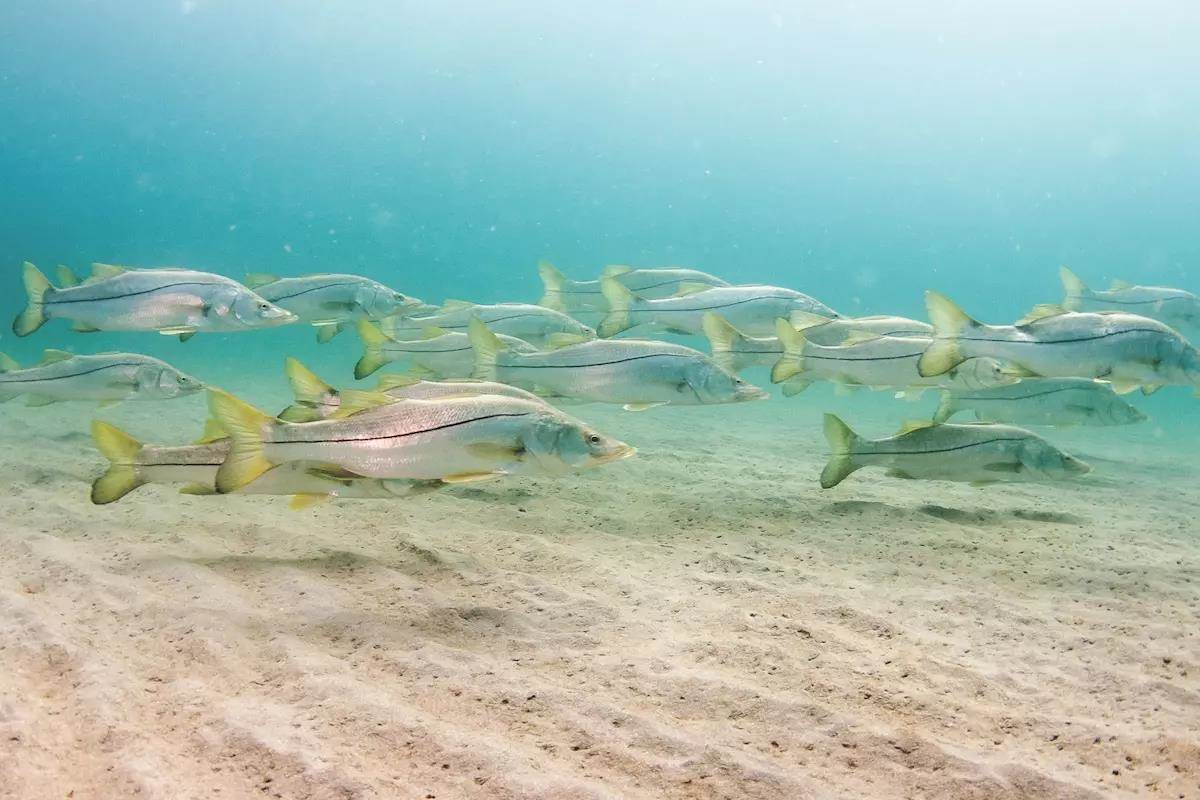
Venice, Florida, rightfully earns its title as the “Shark Tooth Capital of the World,” drawing enthusiasts from far and wide to its sun-kissed shores.
The unique geological makeup of the area, with its ancient seabed deposits, creates an ideal environment for fossilized shark teeth to wash ashore. This makes for a truly unique beach going experience. Instead of just sunbathing, people are actively searching for prehistoric treasures. The thrill of discovering a piece of history, held in the palm of your hand, is an experience that keeps people returning to Venice’s beaches year after year.
How to find them
Most people who look for shark teeth simply stroll along the beach scanning the sand for the shiny black teeth. Others, seeking faster results, walk to the water’s edge where the waves break and there is a foot-high drop-off ledge. They reach down to the edge of the drop-off or even wade out a few feet into the water to scoop up sand and shells. Some use a shovel, a kitchen strainer or just scoop the sand and shells with their hands. Once scooped, they bring it back to the beach and pour it onto the sand. Then they sit on the beach and sift through, looking for their prizes. Other fossil parts, bits of coral, interesting shells or small pebbles may catch the eye, but it is likely that at least one or more teeth will be found in most large scoops.
Most shark teeth are from 1/8″ to 3/4″ or even a bit larger. The really large shark teeth are usually farther out and may require dive equipment to locate. Local Venice dive boats will take you out as they cruise a few miles from the shore. In fact, several boat captains charter trips along the Venice coastline in search of prehistoric fossils and shark teeth. Call any local Venice dive shop, and they will recommend captains specializing in fossils.

The best places to begin your shark tooth hunting adventure are the beaches south of the Venice Jetty, including Caspersen Beach, known to be especially fruitful. Popular techniques involve sifting through the shell-laden sand at the water’s edge, where waves deposit these ancient relics. Many experienced hunters use specialized tools like “snow shovels” or simple sieves to aid in their search. The darker color of the fossilized teeth often contrasts against the lighter sand and shells, making them somewhat easier to spot, though it still requires a sharp eye and a bit of patience.
The history behind these fascinating finds is as captivating as the hunt itself. Millions of years ago, the area was teeming with sharks, and their teeth, being composed of durable materials, fossilized over time. These fossils are then brought to the shore by the forces of the ocean. Each tooth tells a story, a glimpse into the prehistoric past, and the variety of shapes and sizes reflects the diverse shark species that once inhabited these waters, including the Megalodon.
Discover more from Florida's Native Son
Subscribe to get the latest posts sent to your email.




